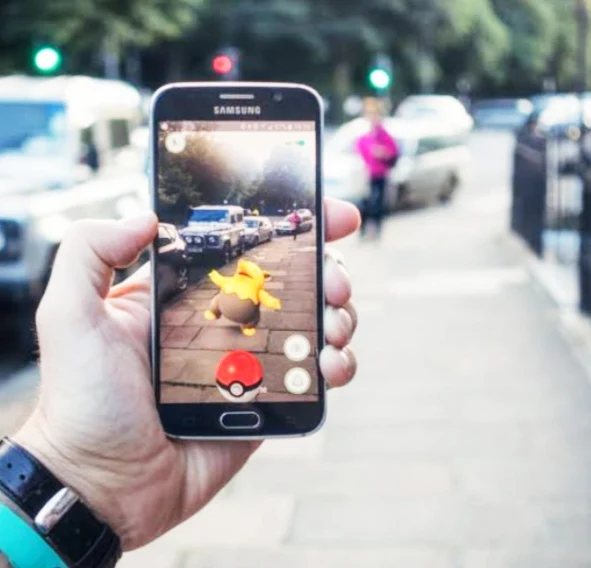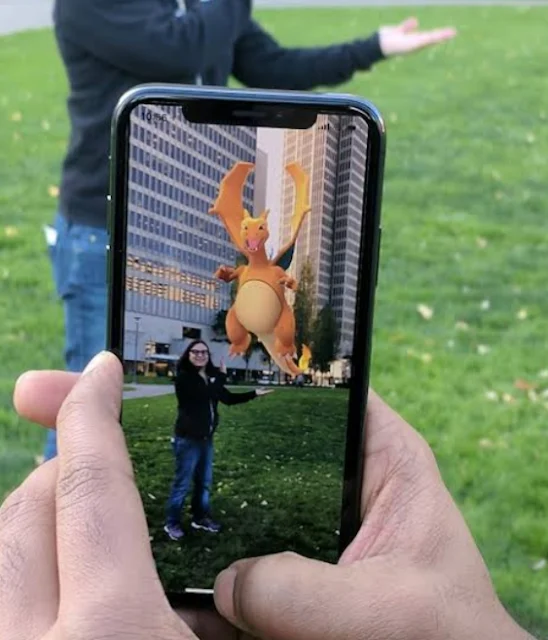Bringing the Pokémon World to Life: A Look at Pokémon Go's AR Project
Pokémon Go, released in 2016, took the world by storm with its innovative use of augmented reality (AR) technology. The game transformed the real world into a hunting ground for virtual Pokémon, making players get up and explore their surroundings. This article delves into the core aspects of Pokémon Go's AR project and explores its impact on the gaming industry.
Table: Key Components of Pokémon Go's AR Project
| Component | Description |
|---|---|
| Location-Based Gameplay | Utilizes GPS to track players' movements and spawn Pokémon in the real world. |
| AR Rendering | Overlays digital Pokémon characters onto the player's phone screen, creating the illusion of them inhabiting the real world. |
| Real-World Interaction | Encourages players to explore their surroundings to find and capture Pokémon, promoting physical activity. |
| Social Features | Gyms and PokéStops, tied to real-world landmarks, encourage interaction and competition among players. |
The Impact of Pokémon Go
Pokémon Go's success highlighted the immense potential of AR in gaming. It demonstrated how AR can bridge the gap between the digital and physical worlds, creating a more immersive and engaging gameplay experience. The game's popularity also sparked a surge in interest in AR development, paving the way for a wave of new AR-powered games across various genres.
Here are some additional points to consider including in the article:
- Challenges of AR Technology Discuss limitations like battery drain and potential safety concerns related to playing in unfamiliar areas.
- The Future of AR Gaming Briefly explore how AR technology is evolving and its potential to shape the future of gaming.
By incorporating these elements, you can create a well-rounded article that explores the technical aspects of Pokémon Go's AR project and its lasting impact on the gaming industry.
Bridging Worlds: Unveiling the AR Magic of Pokémon Go
Pokémon Go, a global phenomenon upon its release in 2016, wasn't just another mobile game. It revolutionized the industry by seamlessly blending the digital world of Pokémon with the real world through Augmented Reality (AR) technology. This article delves into the core technologies behind Pokémon Go's AR project and explores how it transformed the gaming experience.
The AR Mastermind: Key Technologies
The immersive gameplay of Pokémon Go wouldn't be possible without a clever combination of technologies. Let's break down the key components:
| Component | Description |
|---|---|
| Location-Based Gameplay (GPS) | Pokémon Go utilizes the Global Positioning System (GPS) built into smartphones to track a player's physical location. This allows the game to spawn virtual Pokémon in the real world, encouraging players to explore their surroundings. |
| AR Rendering | The magic of seeing Pokémon in your environment comes from AR rendering. The game overlays digital 3D models of Pokémon onto the player's phone screen, creating the illusion that they exist in the real world. |
| Real-World Interaction | By combining location-based gameplay with AR rendering, Pokémon Go encourages players to physically move around to find and capture Pokémon. This unique mechanic promotes physical activity and exploration. |
| Social Features (Gyms & PokéStops) | Pokémon Go isn't just a solitary adventure. Gyms and PokéStops, tied to real-world landmarks like parks and monuments, foster social interaction. Players can battle at Gyms and collect resources at PokéStops, creating a sense of community within the game. |
The Impact of AR Innovation
Pokémon Go's success demonstrated the immense potential of AR in gaming. Here's how it impacted the industry:
- Bridging the Gap: AR blurred the lines between the digital and physical worlds, creating a more engaging and interactive experience for players.
- Increased Immersion: The ability to see and interact with Pokémon in real-time heightened the sense of immersion, making players feel like real Pokémon trainers.
- AR Development Boom: The popularity of Pokémon Go sparked a surge in interest in AR development, paving the way for a wave of new AR-powered games across various genres.
Beyond the Hype: Challenges and the Future
Despite its success, Pokémon Go's AR project isn't without its challenges:
- Battery Drain: The constant use of GPS and AR rendering can significantly drain phone batteries, limiting play sessions.
- Safety Concerns: Focusing on the phone while walking or biking can pose safety risks, especially in unfamiliar areas.
Looking ahead, advancements in AR technology promise even more exciting possibilities:
- Improved Accuracy: More accurate and efficient AR tracking will create seamless interactions with virtual objects in the real world.
- Enhanced Social Experiences: Future AR games could create even more immersive social experiences through collaborative gameplay and real-world interactions.
Pokémon Go's AR project stands as a landmark achievement in mobile gaming. By leveraging technology to bridge the gap between the digital and physical worlds, it paved the way for a new era of immersive and interactive gaming experiences. As AR technology continues to evolve, the future of gaming holds even more exciting possibilities for players to explore and connect with their favorite virtual worlds.
Frequently Asked Questions for Pokémon Go's AR Project
Pokémon Go pioneered the use of augmented reality (AR) in mobile gaming, allowing players to capture and battle Pokémon in the real world. Here are some common questions and answers about Pokémon Go's AR project:
General Questions
- What is Pokémon Go's AR project?
- Pokémon Go's AR project is a mobile game that uses AR technology to overlay digital Pokémon onto real-world environments.
- How does Pokémon Go's AR work?
- Pokémon Go uses a smartphone's camera and GPS to track the player's location and identify nearby Pokémon. When a Pokémon is found, it appears on the screen as if it were in the real world.
- What can I do with Pokémon in Pokémon Go?
- Players can capture Pokémon, battle other players, trade Pokémon, and evolve their Pokémon to become more powerful.
Technical Questions
- What devices are compatible with Pokémon Go?
- Pokémon Go is compatible with most modern smartphones running iOS or Android.
- Do I need a strong internet connection to play Pokémon Go?
- Yes, a stable internet connection is required to play Pokémon Go.
- How accurate is Pokémon Go's AR technology?
- Pokémon Go's AR technology is generally accurate, but there may be occasional discrepancies between the virtual and real worlds due to factors like lighting and GPS signal strength.
Features and Benefits
- What are the benefits of playing Pokémon Go?
- Pokémon Go encourages players to explore their surroundings, get exercise, and socialize with other players.
- What are some of the popular features of Pokémon Go?
- Popular features include raids, gyms, and community days, which allow players to collaborate and compete with others.
- How does Pokémon Go support AR technology?
- Pokémon Go has been a pioneer in AR gaming, demonstrating the potential of AR to enhance mobile gaming experiences and encourage exploration.




